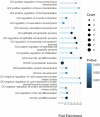Impact of medication on blood transcriptome reveals off-target regulations of beta-blockers
- PMID: 35446883
- PMCID: PMC9022833
- DOI: 10.1371/journal.pone.0266897
Impact of medication on blood transcriptome reveals off-target regulations of beta-blockers
Abstract
Background: For many drugs, mechanisms of action with regard to desired effects and/or unwanted side effects are only incompletely understood. To investigate possible pleiotropic effects and respective molecular mechanisms, we describe here a catalogue of commonly used drugs and their impact on the blood transcriptome.
Methods and results: From a population-based cohort in Germany (LIFE-Adult), we collected genome-wide gene-expression data in whole blood using in Illumina HT12v4 micro-arrays (n = 3,378; 19,974 gene expression probes per individual). Expression profiles were correlated with the intake of active substances as assessed by participants' medication. This resulted in a catalogue of fourteen substances that were identified as associated with differential gene expression for a total of 534 genes. As an independent replication cohort, an observational study of patients with suspected or confirmed stable coronary artery disease (CAD) or myocardial infarction (LIFE-Heart, n = 3,008, 19,966 gene expression probes per individual) was employed. Notably, we were able to replicate differential gene expression for three active substances affecting 80 genes in peripheral blood mononuclear cells (carvedilol: 25; prednisolone: 17; timolol: 38). Additionally, using gene ontology enrichment analysis, we demonstrated for timolol a significant enrichment in 23 pathways, 19 of them including either GPER1 or PDE4B. In the case of carvedilol, we showed that, beside genes with well-established association with hypertension (GPER1, PDE4B and TNFAIP3), the drug also affects genes that are only indirectly linked to hypertension due to their effects on artery walls or their role in lipid biosynthesis.
Conclusions: Our developed catalogue of blood gene expressions profiles affected by medication can be used to support both, drug repurposing and the identification of possible off-target effects.
Conflict of interest statement
The authors have declared that no competing interests exist.
Figures





References
Publication types
MeSH terms
Substances
LinkOut - more resources
Full Text Sources
Medical
Research Materials
Miscellaneous

